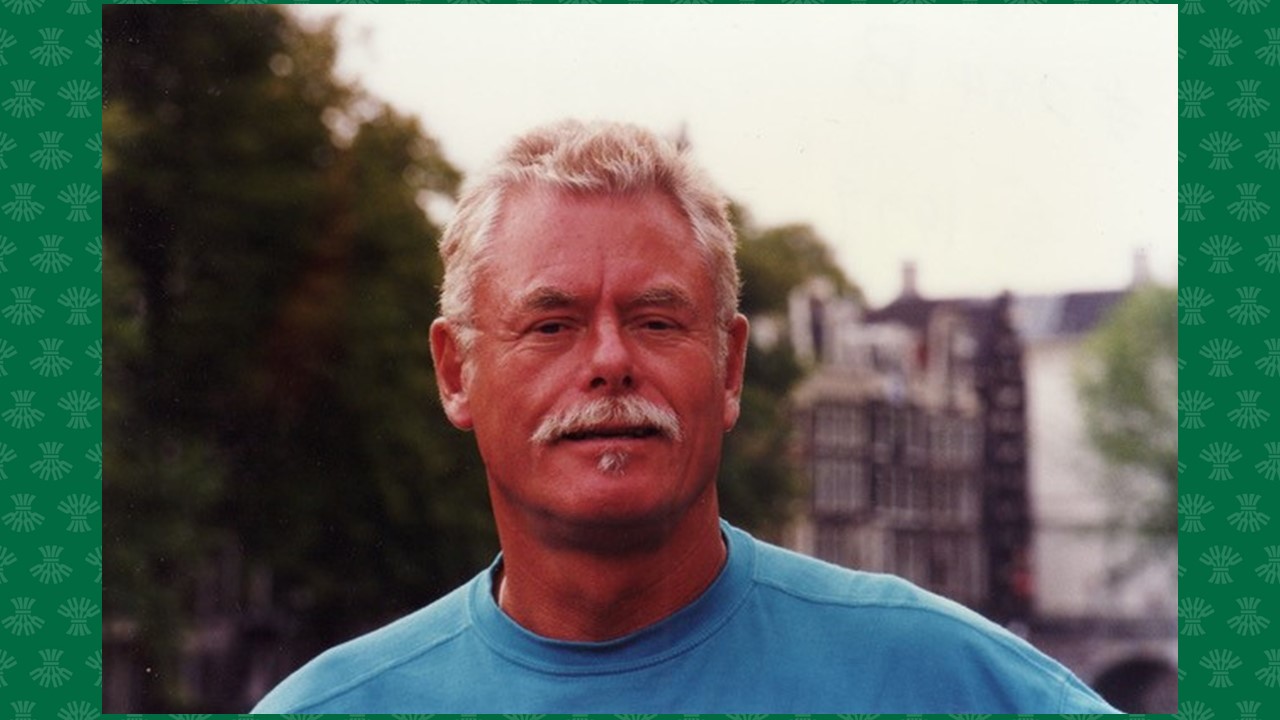
The LGBTQ2S+ Bursary in Undergraduate Medicine: A First for the College of Medicine
The creation of a bursary that recognizes a group you feel strongly about is one of the most effective ways you can leave a legacy for generations to come. It’s a way to support a college or vocation while making a larger, more universal statement. It’s also a way to continue to make a difference in the lives of others, even after you’re gone.
Such was the motivation for Dr. John (Jack) Wilkie (MD’64), an alumnus of the University of Saskatchewan (USask) College of Medicine. His studies eventually led him to a career in ophthalmology in San Francisco where he officially came out and joined the LGBT community in the 1970s.
He was membership chair of the Bay Area Physicians for Human Rights and a founding member of the Gay and Lesbian Medical Association (now the American Association of Physicians for Human Rights).
These two organizations were instrumental in removing homosexuality from the American Psychiatric Association’s classification of mental illnesses, a significant step forward in achieving human rights for gay and lesbian individuals everywhere.
We talked to Dr. Wilkie about what the LGBTQ2S+ Bursary means to him.
Who is the LGBTQ2S+ Bursary intended for?
It is a bursary for members of the queer community; that is, individuals who identify themselves as gay, lesbian, bisexual, transgender, queer or Two-Spirited. First Nations communities have referred to bisexual individuals as two-spirited since pre-contact times. As well, it is for individuals who have demonstrated significant support for the queer community. Recipients must be accepted into any of the four years of medical school.
In my day, the actual LGBTQ2S+ community was many times larger than the self-identified or “out” community and it probably still is in a relatively rural area such as Saskatchewan. The purpose of the bursary is to help queer students and to encourage accomplished members of the queer community to become more visible.
What inspired you to create this bursary?
Several things inspired me. Around 2015, I saw an article in the USask alumni online publication, Green and White, about two graduates of the USask Law School. Brad Berg (LLB’92) and Brian Rolfes (LLB’91) established a scholarship specifically recognizing students for their involvement in advancing LGBT rights.
I am a member of the Gay and Lesbian Medical Association, a working partner of the American Medical Association, which has bursaries for gay medical students. It seemed to me that a similar bursary would raise the profile of queers, or LGBTQ2S+ people, and their accomplishments in medicine and in society at large in Saskatchewan.
When did you begin to think about creating this legacy?
I have always been very appreciative of the University of Saskatchewan for preparing me for such an interesting profession that is so important to humankind all over the world. When I went to the United States after practicing for only seven years in Canada, I felt that I owed more to my alma mater.
How many awards will be given?
At present, there will be one bursary of $4,000 annually. In the future, when my estate is settled, I expect there will be four or five additional, similar bursaries. Or perhaps there will be fewer bursaries of larger value, depending on the funds available and the number of qualified applicants.
What do you hope the bursary will achieve?
On a basic level, I hope it will make life easier for a number of gay and lesbian medical students. On a broader level, I hope it will draw attention to their participation in the medical profession and their contributions to it. The presence of out LGBTQ2S+ medical students and staff will also lead to better care for queer patients.
Was it difficult to create the bursary?
It was not difficult to create the bursary. I presented my ideas and an estimate of the current funds available to Steph Bodnar in the Donor Relations Development Office. She gave me a form that listed and described the features of a bursary or scholarship that need to be understood by the donor in advance. It included the way the funds are managed, the number of the awards and their amounts are discussed and agreed upon. It is a straightforward process and she was a great help.
Do you think the awards will grow in the future?
The plan is for the awards to continue in perpetuity. The hope is that the LGBTQ2S+ community will become more accepted and mainstream in the not-too-distant future and then the bursaries will be awarded mainly based on need.
When my estate is finally settled, depending on the housing and stock markets, my plan is to increase the funding five-fold. So yes, the awards should grow substantially.
Do you think this will serve as a model for others to create this kind of award?
Yes, that would be nice. Already, advances in human rights brought about by LGBTQ2S+ people in the areas of law and medicine have had a profound effect on the lives of queer people throughout the Western World.
What is your advice to help people get started?
Visiting the Advancement Office in-person or viewing the website would be a good place to start after you have decided what you want to achieve and the funds you want to put towards that end.
To learn more about how to establish a bursary to support students, contact Advancement at the College of Medicine.
